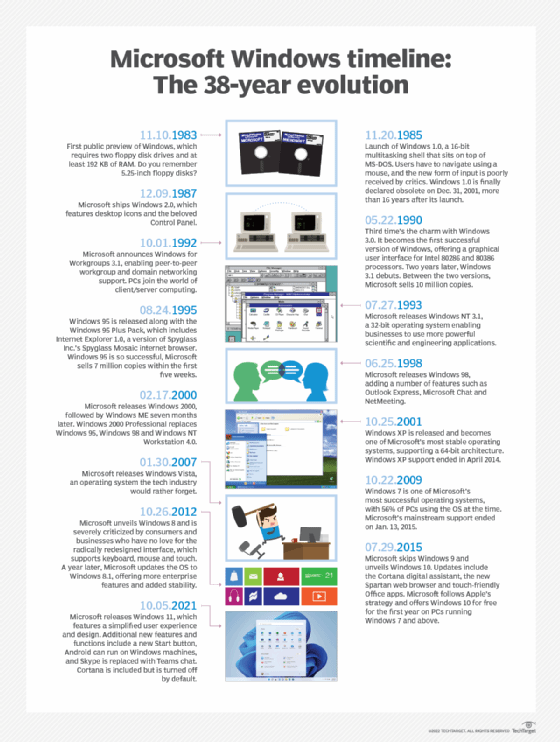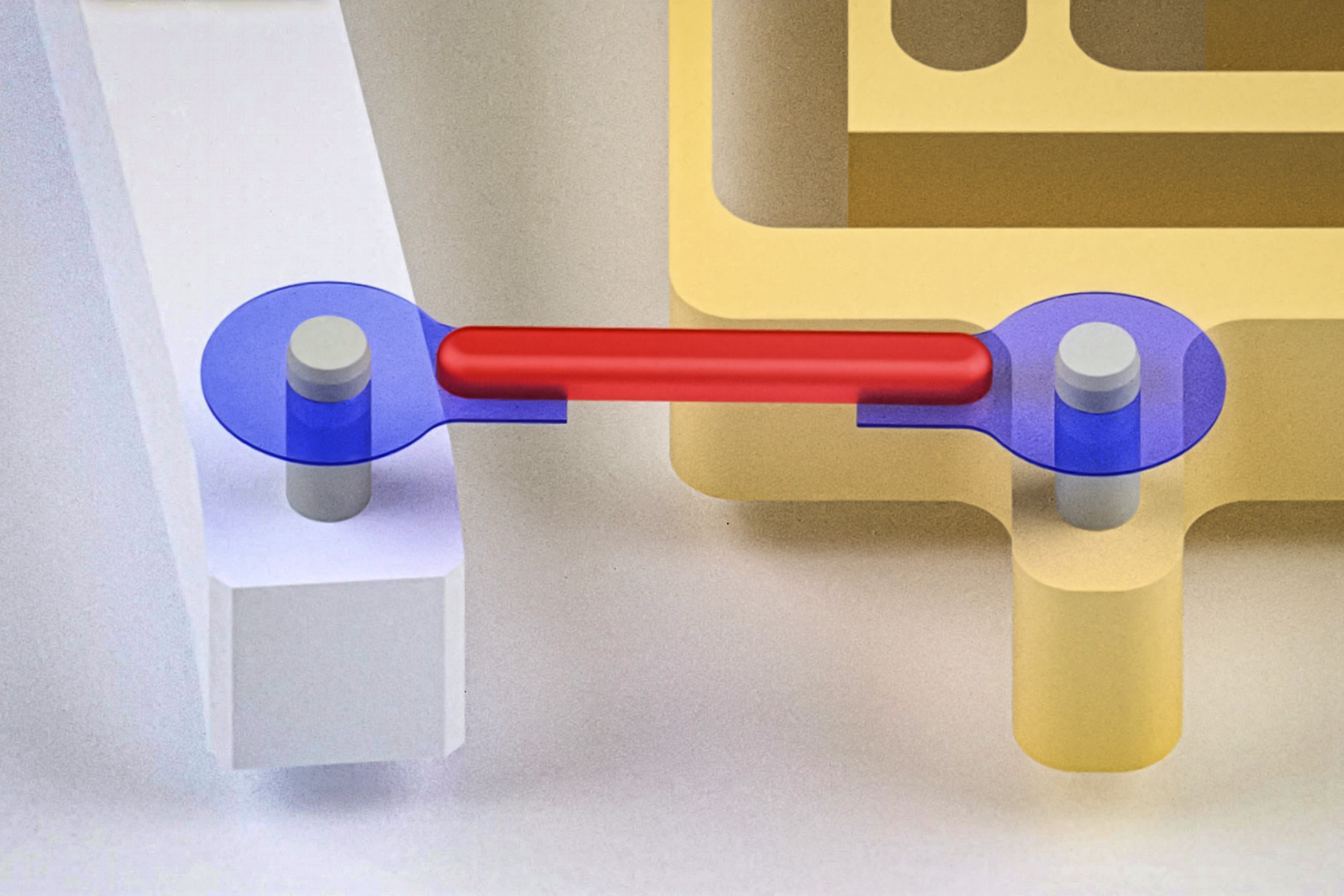Tech
The importance of upgrading to the latest Windows operating system | Computer Weekly

Windows 10 was launched in July 2015. It was supposed to be the last major operating system (OS) upgrade, but Microsoft released Windows 11 in October 2021, and now Windows 10 has reached end of life, which means it will no longer be updated.
Consumers who register for extended support and back up their PCs in the Microsoft cloud will be able to get free security updates until October 2026. Corporate PCs and devices connected to Active Directory will only receive Windows 10 security updates if they are covered by an Extended Security Updates (ESU) subscription.
In July, the National Cyber Security Centre (NCSC) warned that the security risks of not upgrading are significant. As the NCSC notes in a blog post on its website, in addition to the difficulties associated with being out of support, an out-of-date operating system is a prime target for cyber criminals.
“We saw this when a vulnerability in Internet Explorer 6-11 was exploited after Windows XP support ended on 8 April 2014, and before it was patched on 1 May 2014. And again in 2017, a vulnerability in unpatched versions of XP was exploited extensively by the WannaCry ransomware – an attack which resulted in huge costs and damage globally,” says the NCSC in the post.
Analyst Forrester’s Say goodbye to Windows 10 to reduce your cyber risk report points out that Windows 11 now has significant security features that are not available in Windows 10. These include administrator protection that Forrester says helps enable least privileged access. There is a feature called Smart App Control, which is used to validate the applications before they are run. In the report, Forrester notes that the latest version of Credential Guard extends account protection to machine account passwords, which is a new feature in Windows 11.
“Much has been made about Microsoft’s plans to better control the security of the kernel after CrowdStrike’s 2024 issue. Their goal isn’t to completely lock out vendors, but to ensure incidents like this don’t reoccur; if features and functions can be moved out of the kernel and into the user space, they should be,” write Forrester analysts Paddy Harrington, Merritt Maxim, Sophia Barrett and Christine Turley in the report.
But the improvements in Windows security also make it more difficult to move older hardware onto Windows 11. One of the difficulties holding organisations back is the hardware requirements of Windows 11, which introduced a need for PCs to have the Trusted Platform Module (TPM 2.0), UEFI and support for Secure Boot. “If your devices lack even one of these features, you’ll be unable to upgrade easily,” says the NCSC.
Following an analysis of its customers’ PCs, Nexthink estimates there has been a 33% decrease in Windows 10 devices between 19 May and 1 August. Assuming a further 33% reduction by 14 October – the date on which support officially ends – this leaves around 121 million Windows 10 PCs still running the operating system at the end of support deadline.
Discussing the challenge of migration, Tim Flower, DEX strategist at Nexthink, says: “Windows 11 brings powerful new capabilities, but only if devices and employees are ready to take advantage of them.”
Why Windows 10 wasn’t the last major OS update
Microsoft releases two major updates of its Windows operating system each year. Windows 10 was supposed to be the largest refresh before it moved to bi-annual updates, as Gartner research director Ranjit Atwal recalls.
“When Windows 10 came out after Windows 7, Microsoft, I’m sure, said it was going to be the last big operating system upgrade,” he says. “Effectively, Microsoft was saying there would be no Windows 11 after Windows 10, and we took that for gospel to mean that it would be the last upgrade.”
However, in a Computer Weekly YouTube video, Atwal points out that the success of the Windows operating system actually hinders progress.
“So much legacy software and peripherals are supported through the operating system. At some point, that’s just become too much in terms of the code and managing the updates,” he says.
What this implies is that, at some point, updates to device driver software will no longer be available. If a PC continues to run outdated device drivers, there is a risk that the old driver software could have a known vulnerability that is being exploited. Clearly, Microsoft is unwilling to coordinate the effort required to support device drivers indefinitely, which means that perfectly good peripherals will lose support eventually; they may still run using the older (legacy) device driver, but there will not be any newer versions (see box: MacOS end-of-life).
To discourage people from trying to continue using these device drivers, Windows 11 uses a feature called Secure Boot, which enforces signed device drivers. This means only software that has a current digital signature can be installed. But like many features in Windows, there are workarounds, and unless an IT department runs a fully locked-down PC environment, savvy end users can workaround the Secure Boot feature.
Moving to Windows 11
The NCSC says Windows 11 introduces a secure-by-default setup, which includes BitLocker, virtualisation-based security (VBS) and support for native passkey management. While some of these features were available in Windows 10, they are now switched on by default. “Devices that don’t meet Windows 11 hardware requirements – and are therefore unable to use the features that are needed to secure Windows – remain fundamentally vulnerable to attack,” the NCSC warns.
Among the benefits of migrating is the built-in artificial intelligence (AI) that Microsoft is promoting, which is available in Copilot+ PCs. AI PCs will represent 31% of the total PC market globally by the end of 2025, according to Gartner. The analyst firm’s latest forecast projects that worldwide shipments of AI PCs will total 77.8 million units in 2025.
By the end of 2026, Gartner expects 40% of software providers to prioritise investments in AI capabilities directly on PCs, up from 2% in 2024. In the same year, multiple small language models (SLMs) will run locally on PCs, up from zero in 2023.
Unlike five years ago, there is growing interest in using ARM-based hardware to support AI inference workloads on Windows 11. According to Microsoft, ARM-based PCs offer all-day battery life.
Gartner’s forecast shows that ARM-based laptops will gain a larger share of the consumer market than the business market, as application compatibility challenges are overcome. Its research found that business users prefer x86 PCs to run Windows. According to Gartner, the x86 PC market is expected to make up 71% of the AI business laptop market in 2025, with ARM making up 24%.
Discussing the forecast, Atwal says: “Businesses are evaluating ARM-based PCs to understand if it is a viable platform. The issue is that not all of the applications they need run on ARM at the moment, although the large majority of applications are ARM-compatible.”
Microsoft says applications need to be rebuilt to run natively on Windows ARM-based PCs. Applications that have not been rebuilt can be run using the Prism emulation that was shipped with Windows 11, version 24H2.
Atwal expects more native ARM applications to become available over the next 12 months. In particular, he sees an opportunity to use small language models directly on AI PCs, offering faster response times, lower energy consumption and reduced reliance on cloud services.
As Atwal notes, SLMs provide task-specific intelligence. “Since the AI runs directly on devices, SLMs help keep user and business data secure,” he adds.
Over time, the partnership between Qualcomm and Microsoft to deliver ARM-based Copilot+ PCs is likely to result in an enterprise alternative to x86-based Windows hardware.
“That partnership is driving ARM onto mainstream PCs, which is different to where we were maybe five years ago or 10 years ago when ARM hardware was around the edges,” says Atwal.
However, the support for new hardware and constant development of new and improved PC peripherals mean Microsoft will continue to be challenged with how much legacy software the Windows OS can support. From an IT management perspective, this means support for older hardware will continue to drop and IT leaders will continue to plan PC and operating system refreshes to ensure their PC estate remains current.

Tech
I’ve Tried Every Digital Notebook. Here Are the Best Ones on Sale

I love a digital notebook. I write about them all year long here at WIRED, and it’s not often my favorites go on sale. (Or for any to go on sale, besides Amazon’s own sale events.) But this year, multiple digital notebooks I love are on sale for the biggest sale event of the year.
If you’ve thought about getting one of these for yourself, there’s truly no better moment. From reMarkable’s on-sale bundles to Kobo’s deals, you can shop five of the best digital notebooks we’ve ever tried right now at a lower price than you might find until next year. They’re a handy device just about everyone can enjoy, whether you want to digitally annotate your books or write out your grocery list without using a piece of paper.
Looking for more great sales to shop? Don’t miss our guides to the Best Amazon Device and Kindle Deals, Best Laptop Deals, the Absolute Best Cyber Monday Deals, and our liveblog.
Update Dec. 1: We updated prices, links, and deals, and added the Rocketbook Fusion Plus notebook.
The Best Digital Notebook Deals
Some of the best digital notebooks we’ve tried come from reMarkable, and one of reMarkable’s models always seems to reign supreme over our digital notebooks guide. While the Paper Pro Move is the newest model, the reMarkable Paper Pro that launched in September 2024 is my current all-around favorite. It’s not only powerful with tons of tools and an easy interface, but packs a color screen for colorful notes. It also has a gentle front light so that you can use it in darker environments. You can get the bundles on sale right now, so combine one of reMarkable’s markers and folio covers with a Paper Pro to get $50 off.
The best discount from reMarkable is actually for its older device and our previous top pick, the reMarkable 2. It doesn’t have a color screen or the front light, but you’ll get the reMarkable’s great software and options for accessories like the Keyboard Folio to use it like a laptop. The reMarkable 2 bundles are also on sale, so add on your favorite folio of choice on reMarkable’s website to get $70 off.
The Kobo Libra Colour is my favorite all-around e-reader with its color screen and page turner buttons, but you can add on a stylus to have it double as a digital notebook. It’s one of the more affordable options, and it’s a smaller screen than the rest of these, but I especially love that you can use the stylus to doodle on the books you’re reading (something you can’t do with the Kindle Scribe). It’s $30 off on Kobo’s site for Cyber Monday.
The second-generation Kindle Scribe isn’t the best digital notebook, but the long battery life (12 weeks!!) and convenient starting point of it being a Kindle I could already be reading on makes it a great go-to for casual notetakers and doodlers. It’s a good choice for Kindle and Amazon users, and there are new models due out this winter, but they likely won’t be as cheap as this one. (Especially since some of those new models will have color!)
If you like the idea of getting a Kobo e-reader that doubles as a digital notebook, you can go for more of a classic size with the larger Elipsa 2E. This one comes with the stylus, so you won’t have to add it on, and it’s $50 off.
The Rocketbook Fusion Plus digital planner and notebook is for those who don’t want to charge their notebook or give up on the whole “paper” experience. Take notes with the included, erasable Pilot Frixion Pen, scan photos of the pages into the app, and erase the whole thing with the damp microfiber cloth (also included). Fusion Plus is on its steepest discount of recent memory, and comes templates that range from monthly and weekly pages to project management and meeting notes.
Power up with unlimited access to WIRED. Get best-in-class reporting and exclusive subscriber content that’s too important to ignore. Subscribe Today.
Tech
Artificial tendons give muscle-powered robots a boost

Our muscles are nature’s actuators. The sinewy tissue is what generates the forces that make our bodies move. In recent years, engineers have used real muscle tissue to actuate “biohybrid robots” made from both living tissue and synthetic parts. By pairing lab-grown muscles with synthetic skeletons, researchers are engineering a menagerie of muscle-powered crawlers, walkers, swimmers, and grippers.
But for the most part, these designs are limited in the amount of motion and power they can produce. Now, MIT engineers are aiming to give bio-bots a power lift with artificial tendons.
In a study appearing today in the journal Advanced Science, the researchers developed artificial tendons made from tough and flexible hydrogel. They attached the rubber band-like tendons to either end of a small piece of lab-grown muscle, forming a “muscle-tendon unit.” Then they connected the ends of each artificial tendon to the fingers of a robotic gripper.
When they stimulated the central muscle to contract, the tendons pulled the gripper’s fingers together. The robot pinched its fingers together three times faster, and with 30 times greater force, compared with the same design without the connecting tendons.
The researchers envision the new muscle-tendon unit can be fit to a wide range of biohybrid robot designs, much like a universal engineering element.
“We are introducing artificial tendons as interchangeable connectors between muscle actuators and robotic skeletons,” says lead author Ritu Raman, an assistant professor of mechanical engineering (MechE) at MIT. “Such modularity could make it easier to design a wide range of robotic applications, from microscale surgical tools to adaptive, autonomous exploratory machines.”
The study’s MIT co-authors include graduate students Nicolas Castro, Maheera Bawa, Bastien Aymon, Sonika Kohli, and Angel Bu; undergraduate Annika Marschner; postdoc Ronald Heisser; alumni Sarah J. Wu ’19, SM ’21, PhD ’24 and Laura Rosado ’22, SM ’25; and MechE professors Martin Culpepper and Xuanhe Zhao.
Muscle’s gains
Raman and her colleagues at MIT are at the forefront of biohybrid robotics, a relatively new field that has emerged in the last decade. They focus on combining synthetic, structural robotic parts with living muscle tissue as natural actuators.
“Most actuators that engineers typically work with are really hard to make small,” Raman says. “Past a certain size, the basic physics doesn’t work. The nice thing about muscle is, each cell is an independent actuator that generates force and produces motion. So you could, in principle, make robots that are really small.”
Muscle actuators also come with other advantages, which Raman’s team has already demonstrated: The tissue can grow stronger as it works out, and can naturally heal when injured. For these reasons, Raman and others envision that muscly droids could one day be sent out to explore environments that are too remote or dangerous for humans. Such muscle-bound bots could build up their strength for unforeseen traverses or heal themselves when help is unavailable. Biohybrid bots could also serve as small, surgical assistants that perform delicate, microscale procedures inside the body.
All these future scenarios are motivating Raman and others to find ways to pair living muscles with synthetic skeletons. Designs to date have involved growing a band of muscle and attaching either end to a synthetic skeleton, similar to looping a rubber band around two posts. When the muscle is stimulated to contract, it can pull the parts of a skeleton together to generate a desired motion.
But Raman says this method produces a lot of wasted muscle that is used to attach the tissue to the skeleton rather than to make it move. And that connection isn’t always secure. Muscle is quite soft compared with skeletal structures, and the difference can cause muscle to tear or detach. What’s more, it is often only the contractions in the central part of the muscle that end up doing any work — an amount that’s relatively small and generates little force.
“We thought, how do we stop wasting muscle material, make it more modular so it can attach to anything, and make it work more efficiently?” Raman says. “The solution the body has come up with is to have tendons that are halfway in stiffness between muscle and bone, that allow you to bridge this mechanical mismatch between soft muscle and rigid skeleton. They’re like thin cables that wrap around joints efficiently.”
“Smartly connected”
In their new work, Raman and her colleagues designed artificial tendons to connect natural muscle tissue with a synthetic gripper skeleton. Their material of choice was hydrogel — a squishy yet sturdy polymer-based gel. Raman obtained hydrogel samples from her colleague and co-author Xuanhe Zhao, who has pioneered the development of hydrogels at MIT. Zhao’s group has derived recipes for hydrogels of varying toughness and stretch that can stick to many surfaces, including synthetic and biological materials.
To figure out how tough and stretchy artificial tendons should be in order to work in their gripper design, Raman’s team first modeled the design as a simple system of three types of springs, each representing the central muscle, the two connecting tendons, and the gripper skeleton. They assigned a certain stiffness to the muscle and skeleton, which were previously known, and used this to calculate the stiffness of the connecting tendons that would be required in order to move the gripper by a desired amount.
From this modeling, the team derived a recipe for hydrogel of a certain stiffness. Once the gel was made, the researchers carefully etched the gel into thin cables to form artificial tendons. They attached two tendons to either end of a small sample of muscle tissue, which they grew using lab-standard techniques. They then wrapped each tendon around a small post at the end of each finger of the robotic gripper — a skeleton design that was developed by MechE professor Martin Culpepper, an expert in designing and building precision machines.
When the team stimulated the muscle to contract, the tendons in turn pulled on the gripper to pinch its fingers together. Over multiple experiments, the researchers found that the muscle-tendon gripper worked three times faster and produced 30 times more force compared to when the gripper is actuated just with a band of muscle tissue (and without any artificial tendons). The new tendon-based design also was able to keep up this performance over 7,000 cycles, or muscle contractions.
Overall, Raman saw that the addition of artificial tendons increased the robot’s power-to-weight ratio by 11 times, meaning that the system required far less muscle to do just as much work.
“You just need a small piece of actuator that’s smartly connected to the skeleton,” Raman says. “Normally, if a muscle is really soft and attached to something with high resistance, it will just tear itself before moving anything. But if you attach it to something like a tendon that can resist tearing, it can really transmit its force through the tendon, and it can move a skeleton that it wouldn’t have been able to move otherwise.”
The team’s new muscle-tendon design successfully merges biology with robotics, says biomedical engineer Simone Schürle-Finke, associate professor of health sciences and technology at ETH Zürich.
“The tough-hydrogel tendons create a more physiological muscle–tendon–bone architecture, which greatly improves force transmission, durability, and modularity,” says Schürle-Finke, who was not involved with the study. “This moves the field toward biohybrid systems that can operate repeatably and eventually function outside the lab.”
With the new artificial tendons in place, Raman’s group is moving forward to develop other elements, such as skin-like protective casings, to enable muscle-powered robots in practical, real-world settings.
This research was supported, in part, by the U.S. Department of Defense Army Research Office, the MIT Research Support Committee, and the National Science Foundation.
Tech
The Best Cyber Monday Streaming Deals With a Convenient Roommate’s Email Address

HBO knows you’re bored and cold. It wants you to Max and chill with Noah Wyle in scrubs. The company offers some of the best Cyber Monday streaming deals with a ridiculously low-priced $3/month offer for basic HBO Max (it’s the version with ads and 2K streaming, but still, super-cheap). Disney Plus and Hulu deals are bundled up for $5/month. Apple TV wants back in your life for $6.
Of course, this deal is only meant for new customers. Not boring ol’ existing customers. If you already have basic HBO Max, you’re already paying $11 for the same service, and HBO would like you to keep doing that. Streaming apps are banking on you being complacent and happy in your streaming life. Maybe they’re even taking you for granted.
Sometimes you can get the current deal just by threatening to cancel, or actually canceling, your account. Suddenly, you’re an exciting new customer again! Another method is by using an alternate email account (perhaps your spouse’s or roommate’s?) and alternate payment information as a new customer. If you do use a burner email (you did not hear this from me), check in on your favorite app’s terms of service to make sure you’re not in violation by re-enrolling with different emails. I’ll also issue the caveat that you lose all your viewing data and tailored suggestions if you sign up anew.
But times and wallets are tight! And $3 HBO Max sounds pretty good. After all, every middle-aged American man needs to rewatch The Wire once every five years or so—assuming he’s not the kind of middle-aged man who rewatches The Sopranos instead. Here are the current best streaming deals for Cyber Monday 2025.
Devon Maloney; ARCHIVE ID: 546772
Regular price: $80
-

 Sports1 week ago
Sports1 week agoWATCH: Ronaldo scores spectacular bicycle kick
-

 Entertainment1 week ago
Entertainment1 week agoWelcome to Derry’ episode 5 delivers shocking twist
-

 Politics1 week ago
Politics1 week agoWashington and Kyiv Stress Any Peace Deal Must Fully Respect Ukraine’s Sovereignty
-

 Business1 week ago
Business1 week agoKey economic data and trends that will shape Rachel Reeves’ Budget
-

 Politics1 week ago
Politics1 week ago53,000 Sikhs vote in Ottawa Khalistan Referendum amid Carney-Modi trade talks scrutiny
-

 Tech6 days ago
Tech6 days agoWake Up—the Best Black Friday Mattress Sales Are Here
-

 Tech1 day ago
Tech1 day agoGet Your Steps In From Your Home Office With This Walking Pad—On Sale This Week
-

 Fashion1 week ago
Fashion1 week agoCanada’s Lululemon unveils team Canada kit for Milano Cortina 2026



-Reviewer-Photo-SOURCE-Nena-Farrell.jpg)










